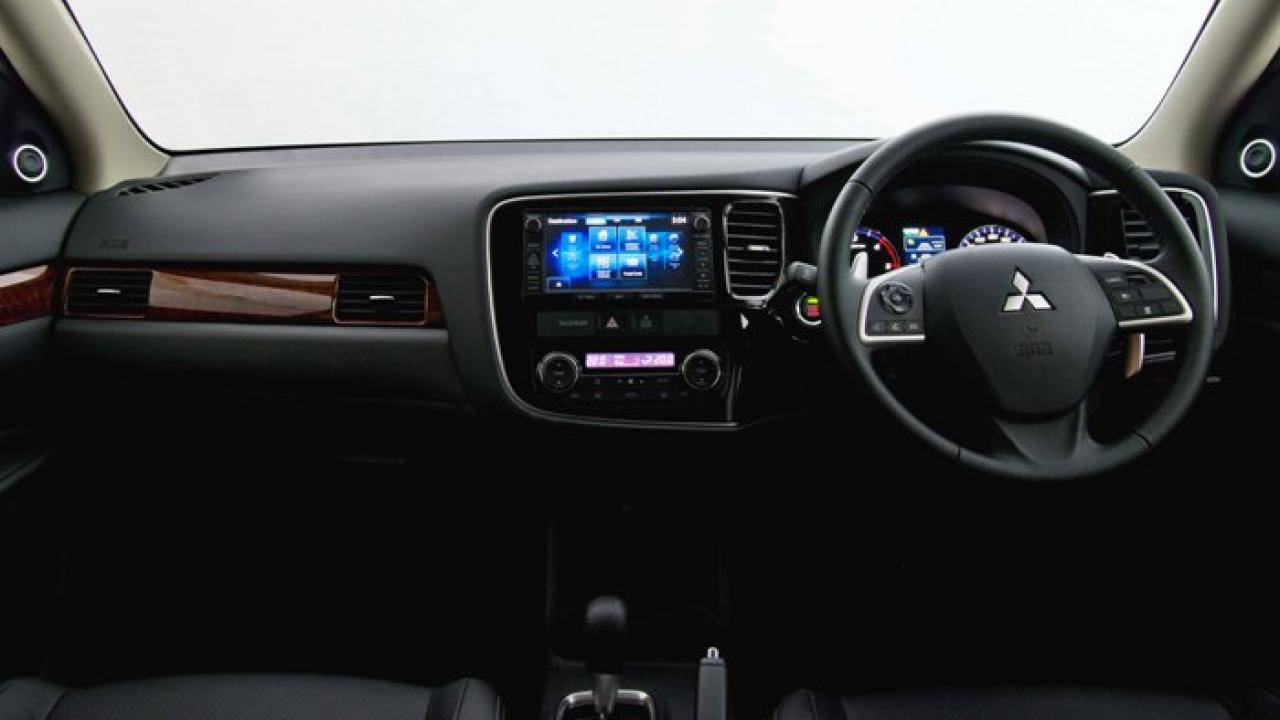New car report; More to like in new Outlander
No question, the SUV is flavour of the moment, and one of the leaders of the pack, Mitsubishi’s Outlander, has received a pleasing revamp.
The previous Outlander achieved great success in New Zealand, finding favour with over 7,500 Kiwi buyers during its seven year lifespan and topping the sales ladder in its segment for much of that time, only being knocked off its perch in the last year of its life by competitors offering more modern, more fuel efficient and more highly equipped product.
But Mitsubishi is back in the running with the 2013 Outlander, with an up to date new look, more equipment, and more importantly, at last there’s a diesel offering.
Gone is the gaping mouth jet fighter grille that formed the basis of the old model's 2010 mid-life makeover, to be replaced by a more conservative but more attractive slimline affair. The rear three quarter styling has also gone under the designer’s microscope, with the re-designed glasshouse tapering away at the rear at a more conventional angle than before, creating the optical illusion of a longer vehicle, despite overall length remaining the same.
A great deal of work has gone into improving NVH (Noise, Vibration and Harshness), resulting in a vehicle that feels much more refined. The quieter, more serene environment has been achieved by using thicker glass, improved soundproofing materials, better engine oscillation absorption, improved suspension insulation and reductions in wind noise.
Interior trim quality has been improved too, with new padded soft touch materials and the use of more premium finishes throughout.
And now there's a diesel
The Outlander is available in New Zealand with three engine options, starting with a 112kW/193Nm 2.0litre petrol, offered in 2WD at entry level LS spec. The 4WD LS, XLS and range-topping VRX models are powered by a 126kW/224Nm 2.4litre petrol engine, with the VRX also available with the new 112kW/366Nm 2.2litre diesel. For those wanting the diesel but not needing the full house equipment level of the VRX, there’s a VR diesel available.
Mitsubishi have chosen not to offer Kiwi buyers a manual transmission, a sensible decision in our market where some of their competitors have tried and failed with manual SUVs. Petrol versions have a CVT transmission and diesels a traditional six speed automatic. All but the LS 2WD have sports paddle shifters on the steering wheel.
All but the LS have keyless start, dual zone air-conditioning and seven seats as standard, but there is a bonus for LS buyers in doing with just five seats instead of seven, in that they get a 63 litre fuel tank instead of the 60 litre capacity tank across the rest of the range. All models have alloy wheels, 16 inch for LS and VR; 18 inch for XLS and VRX.
For seven seat models, the 60/40 split second row seating is now much easier to fold and operate, and now slides 250mm, providing more legroom and easier access to the 50/50 folding third row.
More equipment but less weight
The VRX is treated to a premium level of specification and equipment which includes heated leather seats (power operated driver’s seat), woodgrain trim accents, seven inch Navigation touch screen display with MP3, USB and Bluetooth. There's now a one piece rear hatch (electrically operated on the VRX), replacing the two piece tailgate of the old model.
Safety systems a-plenty, all models come equipped with seven airbags (including a driver’s knee bag). Increased use of high tensile steels and other lightweight materials result in increased safety with the added benefit of an average 100kg weight saving. Latest safety features on VRX models include e-Assist, which incorporates Adaptive Cruise Control (ACC) and Forward Collision Mitigation (FMC). FMC uses radar to identify a potential collision ahead, applying the brakes if the driver doesn’t in order to mitigate the consequences of an impact.
Towing weight is 750kg across the range for unbraked trailers, with braked trailer capacity being 1,600kg for petrol and 2,000kg for diesel models.
Petrol model pricing is $39,990 for the 2WD LS, $43,990 for 4WD LS, $47,490 for XLS and $54,490 for VRX. Diesels are priced at $49,990 for the VR and $56,990 for the VRX. Fuel consumption is claimed to be a frugal 6.6L/100km for the 2.0 litre 2WD LS, 7.5L/100km for the 2.4 litre petrol range and just 5.8L/100km for diesels.
Visually appealing, well equipped, comfortable, well priced and with a punchy diesel option, Mitsubishi’s 2013 Outlander is sure to be back on the shopping list for SUV buyers. Whether it achieves the heady heights the previous model did in its heyday, in a market now crowded with good SUVs, only time will tell, but it’s a more than worthy contender.


